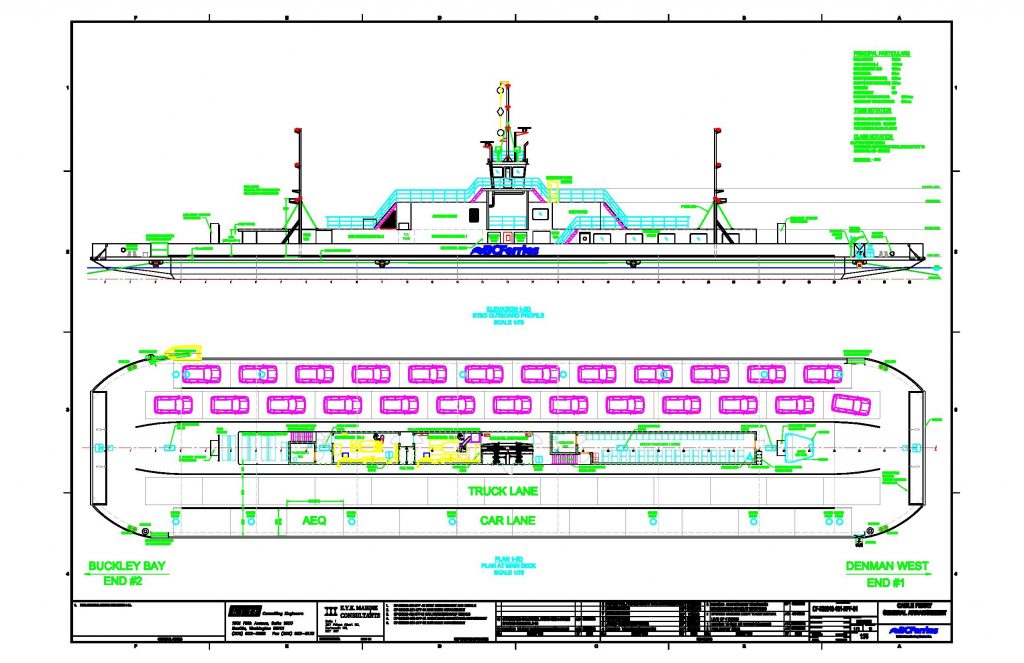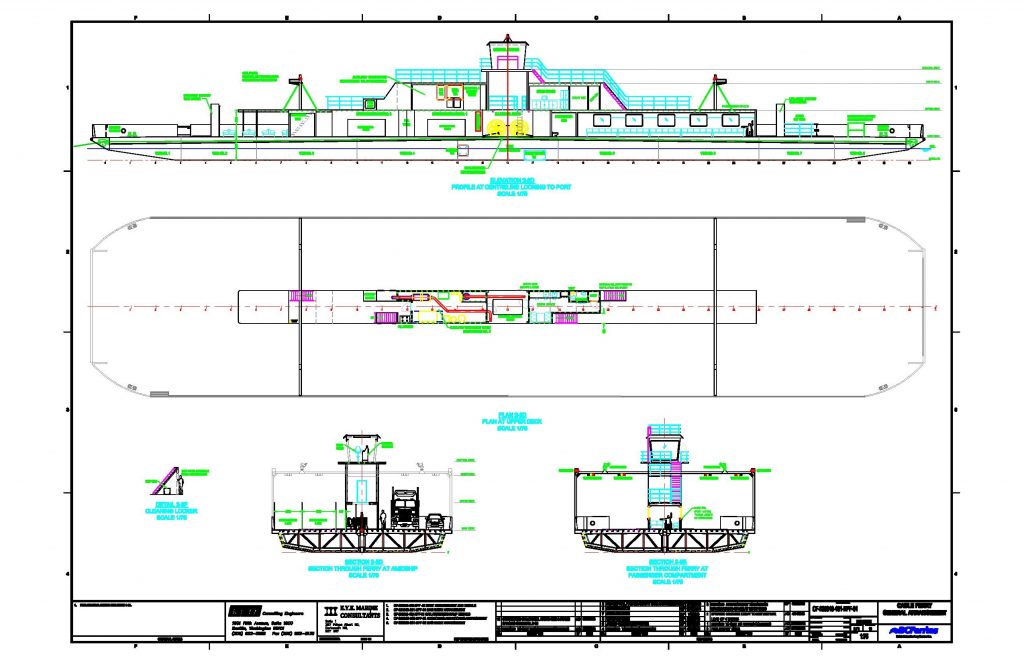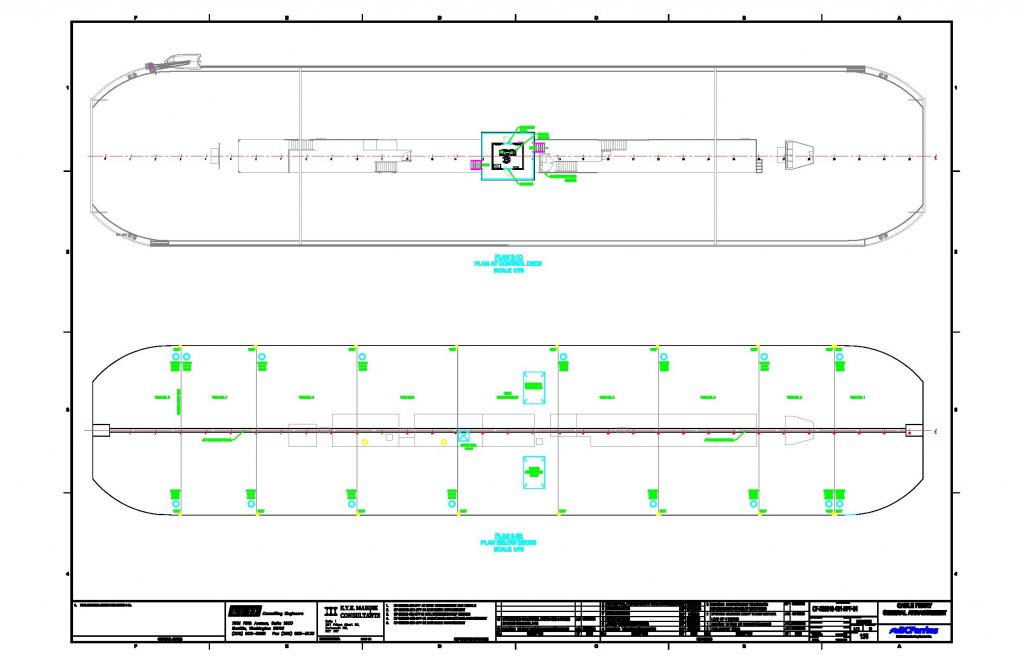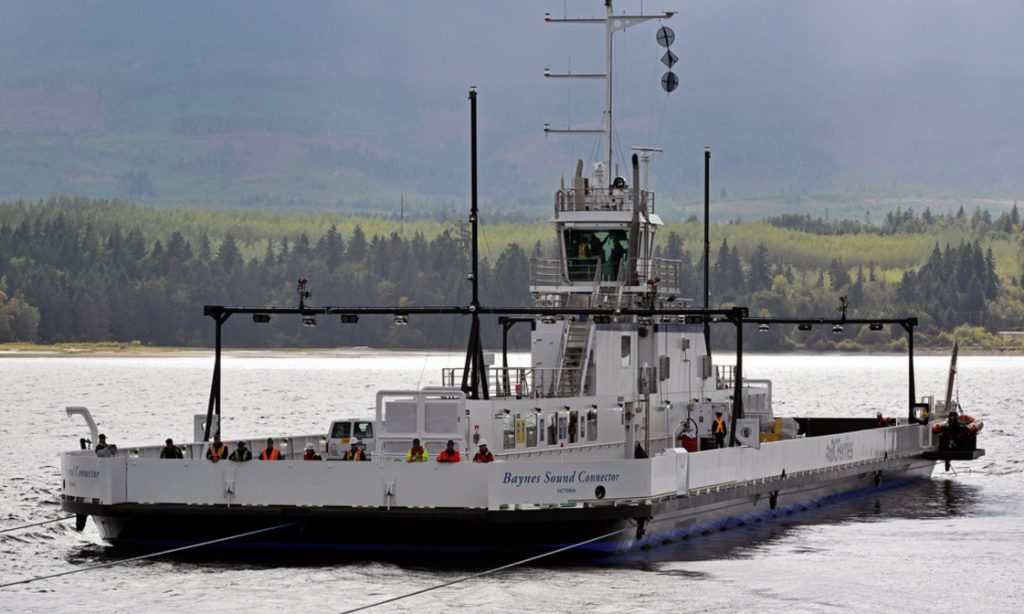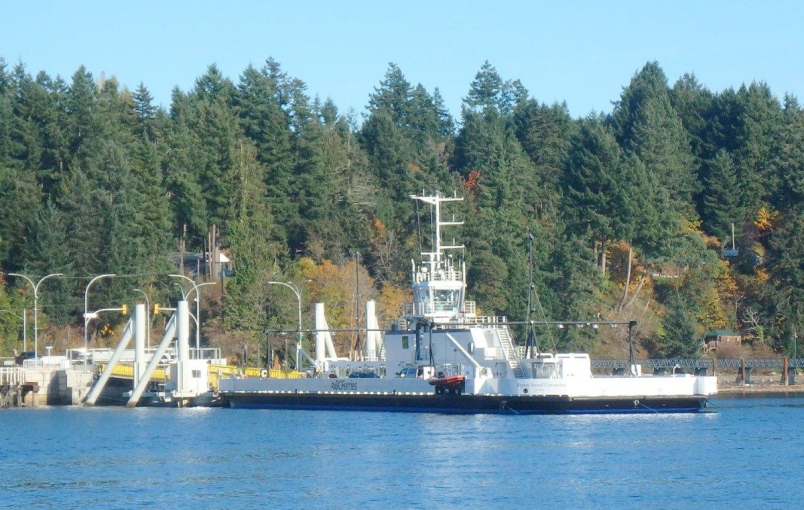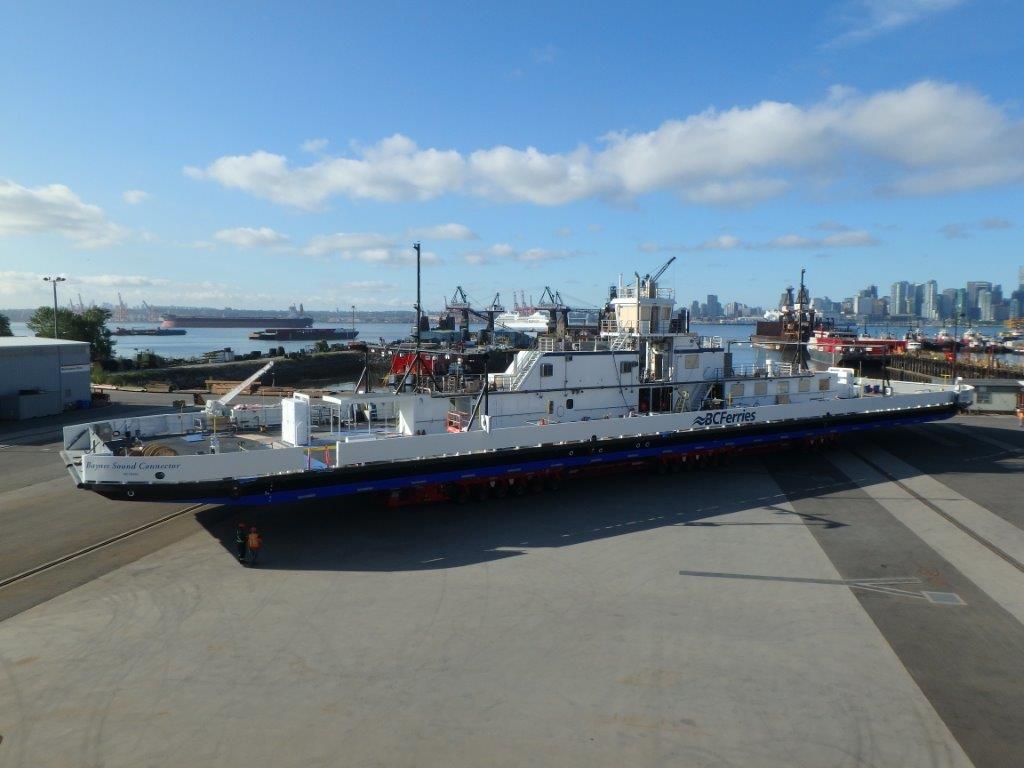
E.Y.E. Marine was the principal designer of the new Baynes Sound Connector (Denman Island Ferry) which entered service in the summer of 2015. This is a Lloyd’s classed ferry which operates on the longest cable ferry route in the world and the ferry at 50 car capacity requires a length of almost 80 metres. This ferry utilizes a three cable system similar to the requirement for BC Ministry of Transport, a single drive cable is fitted along the centerline along with a guide cable on either side.
This new cable ferry uses less than half the fuel of it’s predecessor, reducing greenhouse gas emissions by 480 tonnes of CO2 equivalent annually.
Denman Island is one of the Northern Gulf Islands and part of the Comox Valley Regional District of British Columbia, Canada.
Particulars
| LOA: | 78.5 metres |
| Beam: | 17 metres |
| Depth: | 2.1 metres |
| GRT: | 753 tonnes |
| Vessel Type: | Passenger Ferry |
| Complement: | 150 total |
| Classification: | Sheltered Water Voyage |
| Main Engines: | 2 x Detroit Deisel S60, Tot Power=744 kW |
| Propulsion: | Cable Driven on Bullwheel by Hydraulic Motor |
| Cruise Speed: | 8 knots |
| Max Speed: | 9 knots |
| Fuel Capacity: | 6,960 litres |
| Water Capacity: | 6,615 litres |
| Owner: | British Columbia Ferry Services Inc. |
| Shipyard: | Vancouver Shipyard Co Ltd |
Machinery and Auxiliary Systems
The ferry is fitted with an EYE designed bullwheel system that is driven by Hagglunds CA100 hydraulic motors.
In conjunction with BC Ferries, EYE has developed a cable monitoring and management system to provide safe passage for the passengers as well as a very good tool for the operator for preventative maintenance.
Outfitting
The ferry is outfitted with all required safety appliances, pollution control gear and navigational equipment in accordance with the regulations. At each end of the ferry there is a retractable gate that is hydraulically driven that provides a vertical barrier while the ferry is in transit, increasing the safety of the passengers.
From the request of the BC Ferries patrons adjacent to the indoor passenger area on the main deck there is a gated pet area to allow for some outdoor time while in transit.
Construction
The ferry is steel construction and designed in accordance with ABS Rules for Building and Classing Steel Barges. All machinery, auxiliary systems and accommodations are housed above the main deck.
All deckhouses are along the centerline to allow for loading of vehicles on both sides of the ferry.

